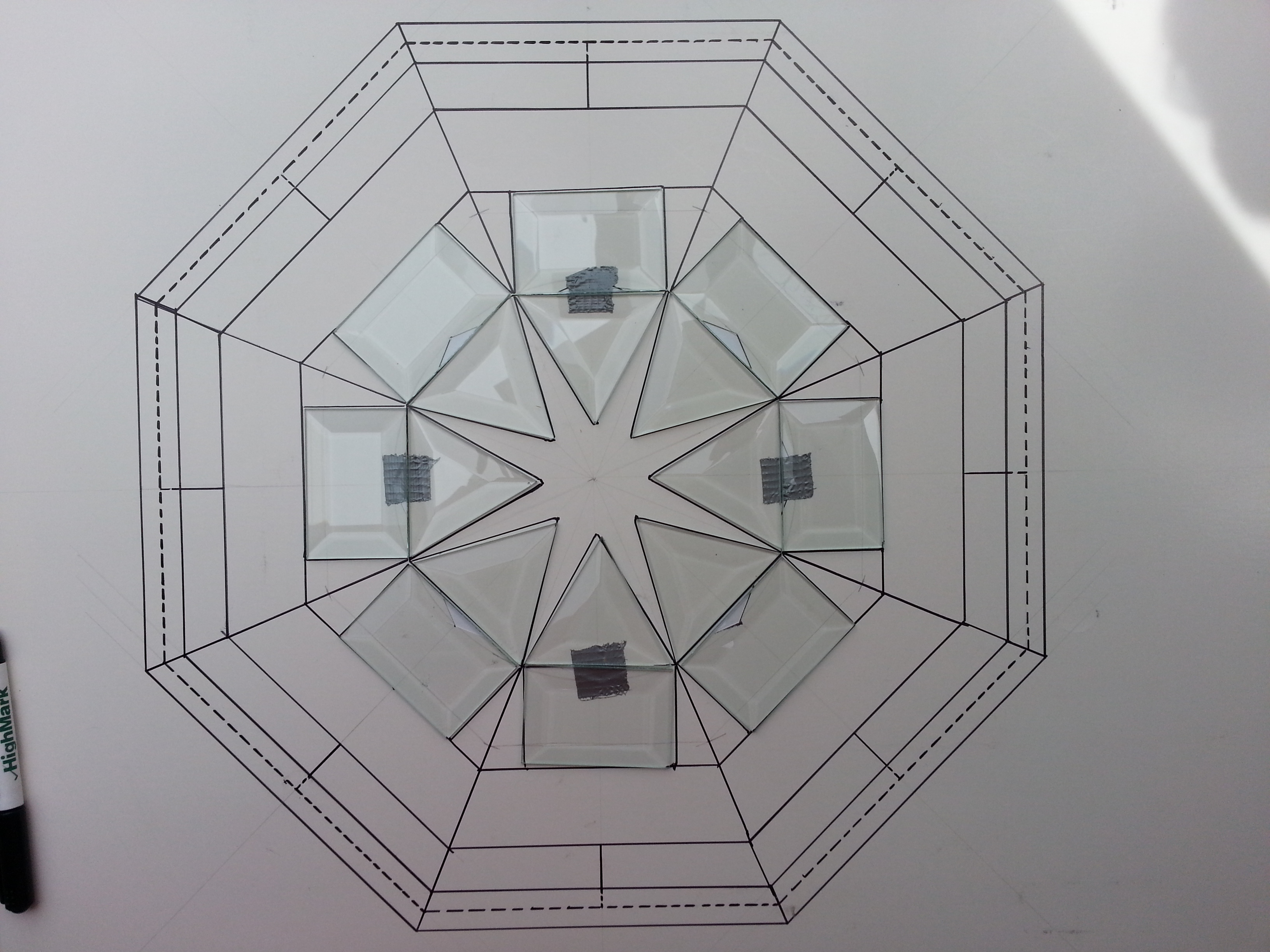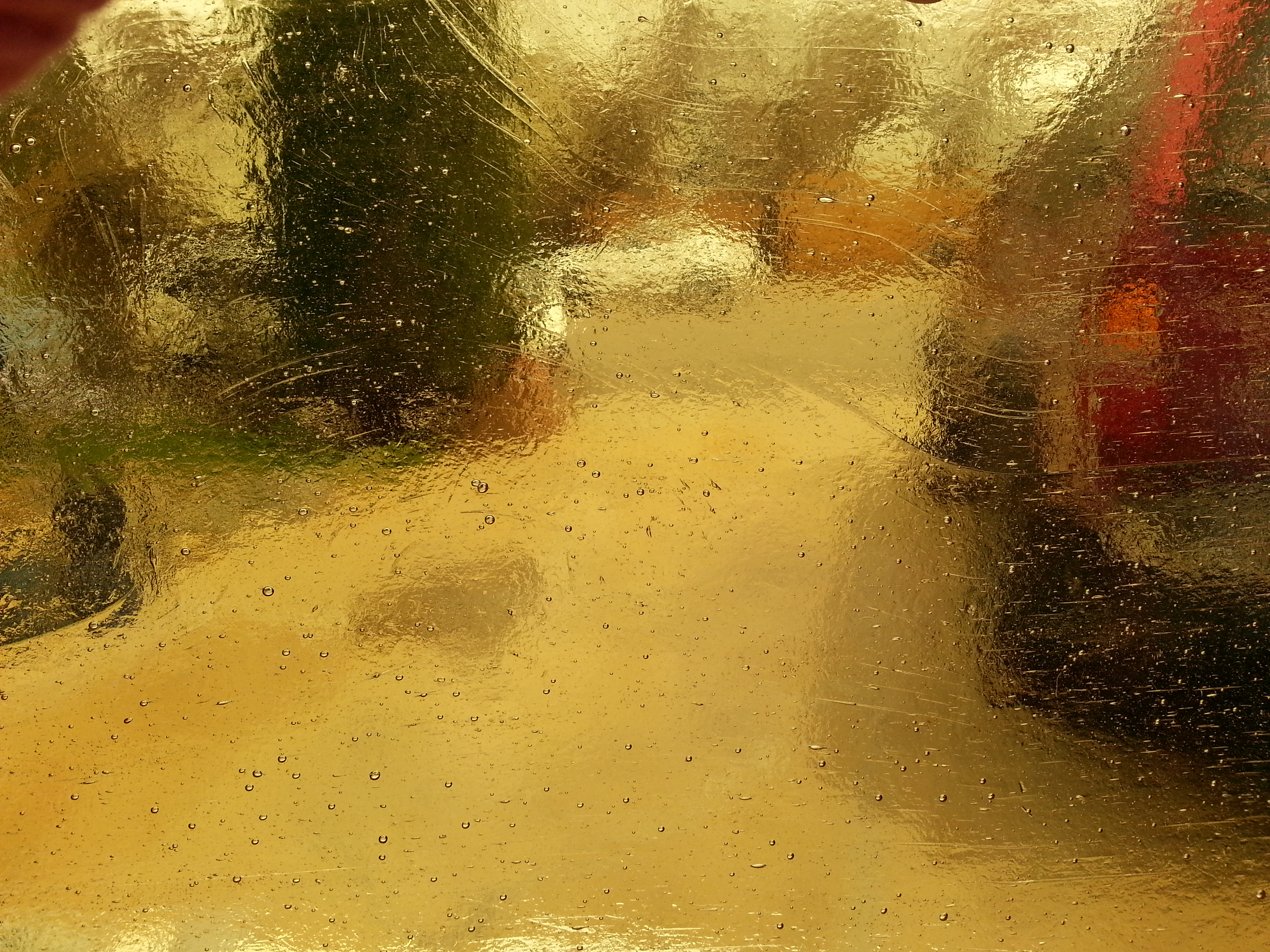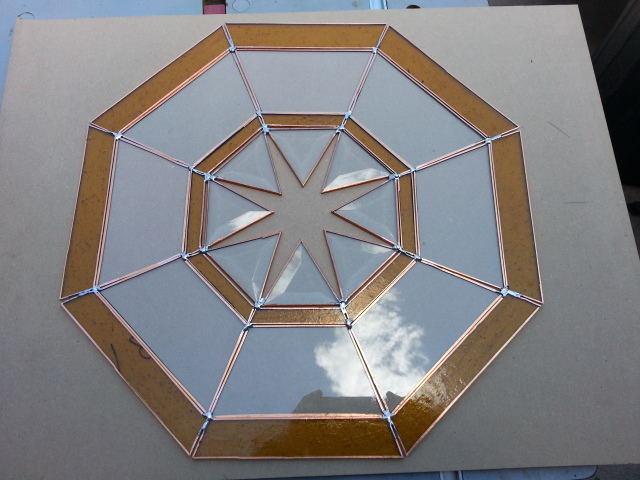With the layout nearly complete, the bevels are laid out to check design. It was at this point I found I had drawn the middle of the window 22 1/2 degrees off-center, so I had to cut it out and tape it in its correct location. As long as I can follow it, there's no problem.
The center of the window will be a gold seedy glass from Spectrum Glass. The triangular darts between the triangular bevels will be glue chip glass, also from Spectrum. It's a glass I really like to pass light but limit vision. The seedy gold and the glue chip also lend an "antique-y" air to the window.
The window will be framed in 3/4" pine, with a groove for the window to sit in. The outside edge of the window will also be gold. Glue chip will separate the rectangular bevels and the outside ring of gold.
As the photo shows, the seedy gold passes light nicely, but blurs vision quite a bit, making it nice for windows.
The seedy appearance comes from bubbles and small imperfections in the glass, just like some old glasses did. The uneven flow of the glass during manufacture also lend to the aged look.
The decision was made to simplify the window to a gold-clear theme. The bevels enhance the inner octagon, and will feature a "sunburst" type of design in gold.
The pieces of glass are assembled by a process called "foiling." Small strips of copper foil are applied to all edges of the glass, burnished down, fluxed to remove impurities, and then soldered to the adjacent piece of glass. Foiling is a slow process, compared to cutting the class to shape.
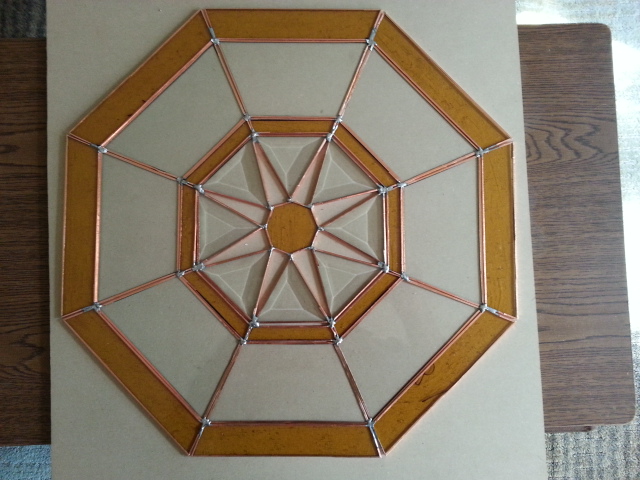
Building a glass window is a one-at-a-time process, regardless of how many you have to build. As with anything like this, the assembly of the third window went much faster than the second, which was faster than the first. The first ends up being kind of a prototype for the final project, except that it is part of the project..
What many people don't understand is that this is NOT mass production, even with multiple windows. Each piece of glass still has to interconnect with the other pieces in the window, ultimately requiring each piece to be fit by hand.
As with any handmade glass project, joint lines may vary slightly in width, shapes may vary slightly, glass colors may be a bit different, etc. but this is ultimately the beauty of stained glass.
This is one of the finished window panels. All solder joints have been blackened with patina to highlight the design and shape of the window. This panel will be mated with a clear sheet the same shape before it goes into the wooden frame.
The clear glass provides the outer protection the stained glass panel needs. It is pretty rigid at this point, but is still able to be bent with enough pressure, causing the joints to fail by pulling the copper foil from the glass.
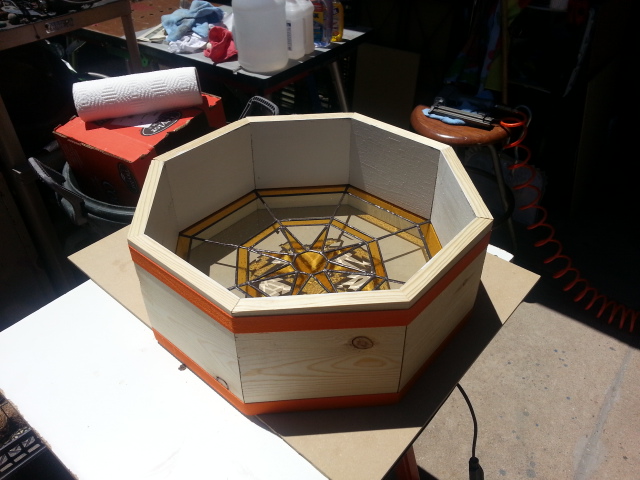
The windows are finally going in the frames. I ran into a major problem getting the clear glass clean so you could see it was clear. The assembly and soldering process created a few problems, and actually required replacement of a few pieces due to spotting and pitting from the chemicals used.
I remember similar problems when I first started doing stained glass many years ago, and remember at the time vowing I would never used large pieces of clear glass again for that very reason.
I also had to put a lead came border around the windows, even though they were going into rabbet joints in the wood frames.
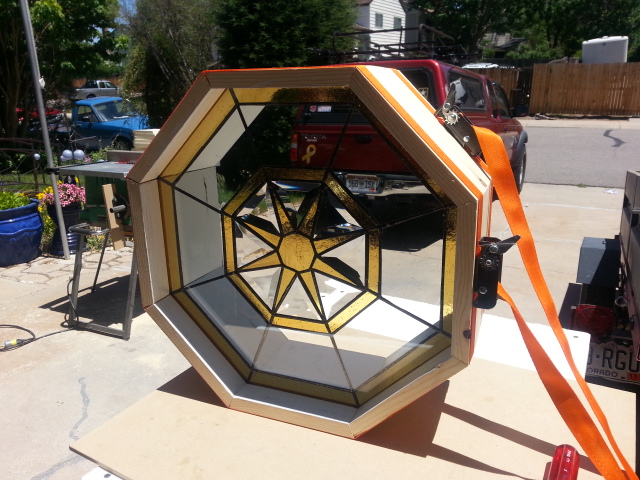
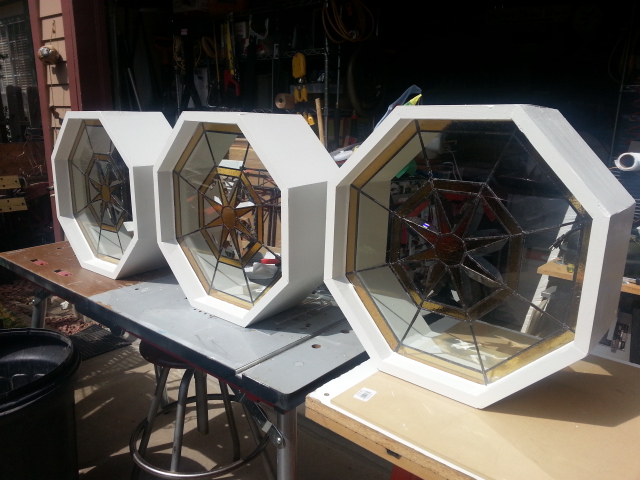
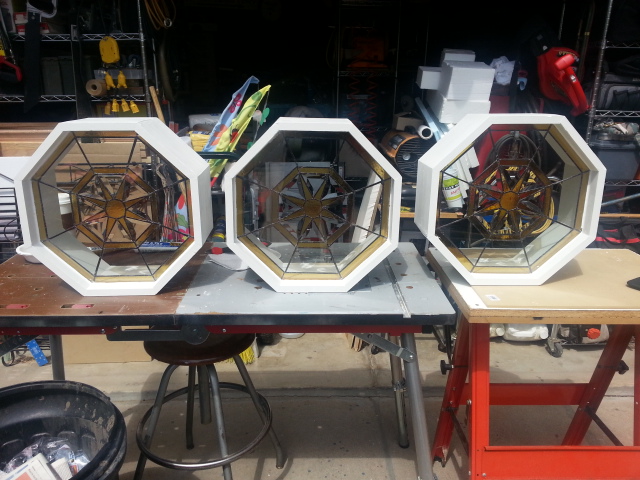
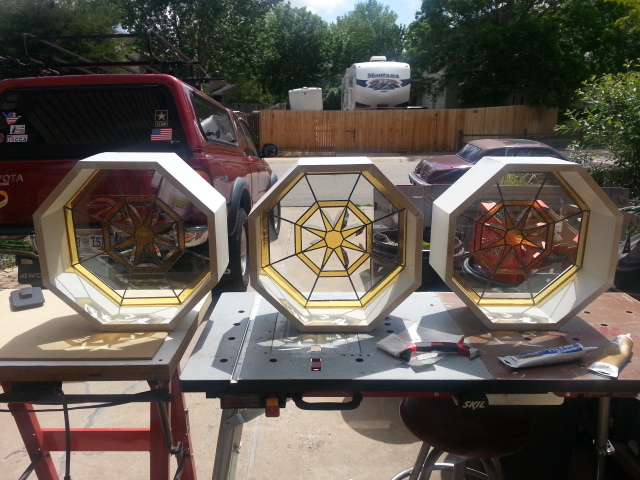
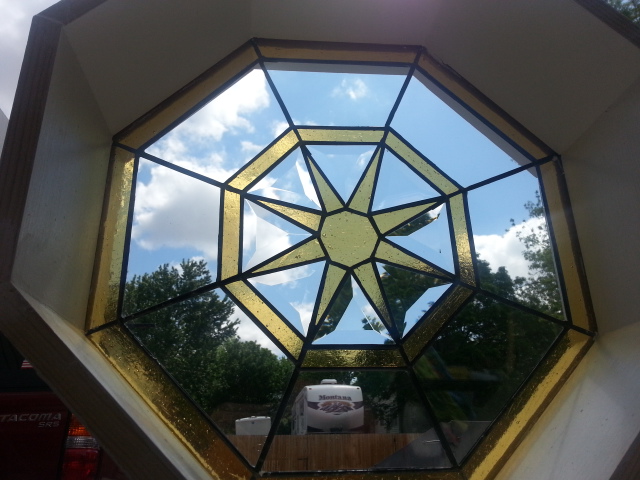
A trio of finished windows, ready to be packed and prepared for shipping.
Finally managed to beat the weather and get a bright, dry, sunny day to work!
Whether windows will be shipped as a unit, or as three separate pieces, has yet to be determined. Packing with foam and stretch wrap is the same either way, so that's the final step.
